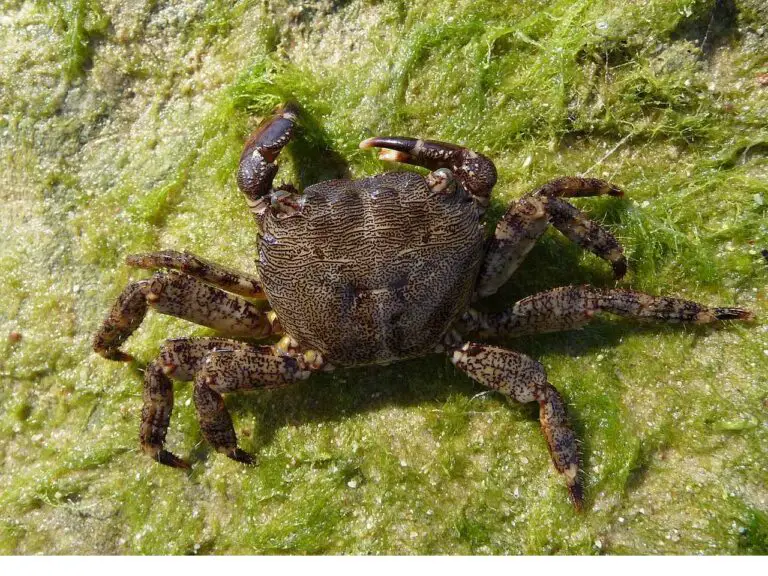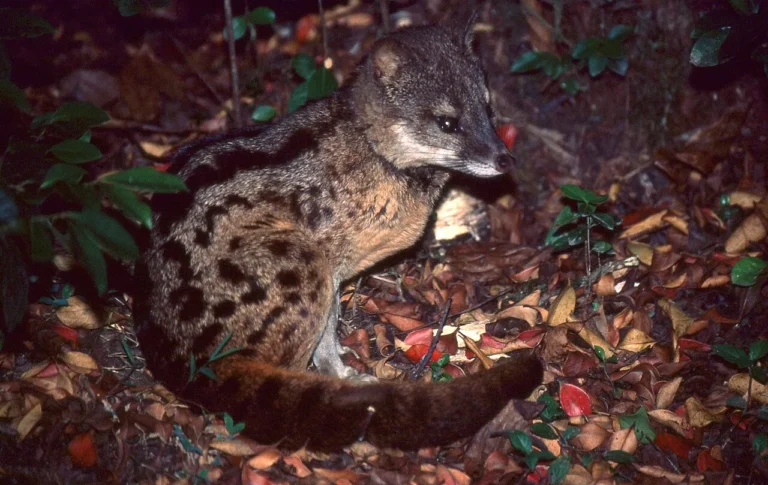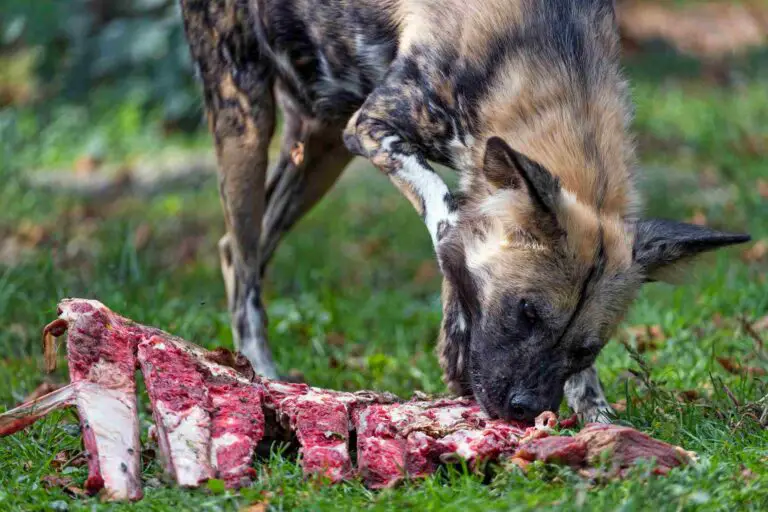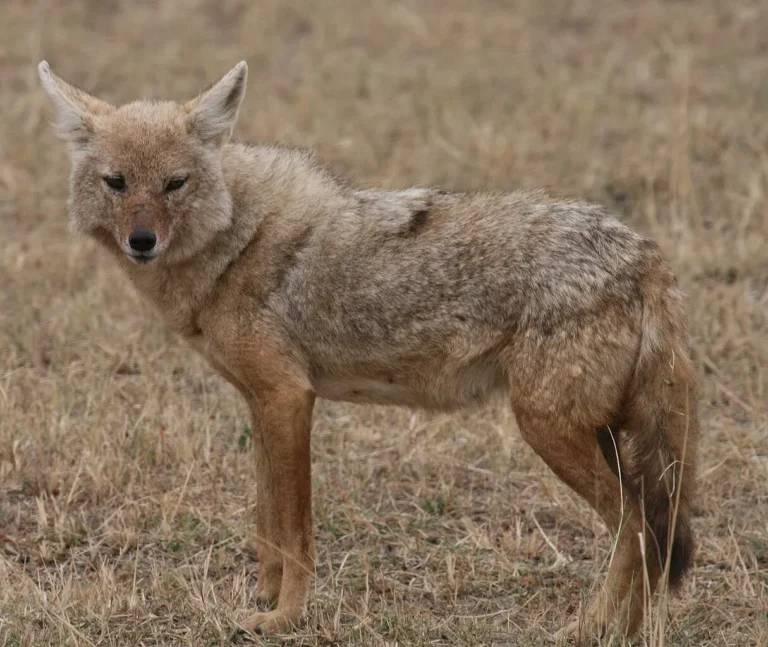Are Lions Apex Predators? Trophic Status of Lions Revealed
Lions are considered apex predators because they occupy the topmost level of the food chain in their natural habitats. As tertiary or quaternary level predators, they have a significant trophic impact and influence all consumers below them.
One of the key reasons why lions are apex predators is that they have no natural predators above them in the trophic hierarchy. This allows them to maintain their position as top predators and exert control over their ecosystems. Their relatively large size and high trophic impact contribute to their status as apex predators.
Is a Lion an Apex Predator?
Yes, lions are apex predators in their natural habitats, particularly in savanna and arid regions. They occupy the topmost level of the food chain, exerting control over their ecosystems. Lions have a significant trophic impact, influencing all consumers below them.
One of the main reasons why lions are classified as apex predators is their ability to prey on primary consumers. While they primarily target herbivores, such as zebras and wildebeests, lions are also capable of hunting secondary consumers if their preferred herbivores are scarce. This versatility in prey selection further solidifies their position as apex predators.
Lions have no natural predators above them in the trophic hierarchy. This lack of natural enemies allows them to maintain their status as top predators and regulate the populations of other species in their ecosystems. Their relatively large size contributes to their dominance, as it provides them with the strength and power to overpower their prey.
Furthermore, lions’ high trophic impact is another factor that supports their classification as apex predators. They play a crucial role in shaping the structure and dynamics of their ecosystems. By controlling herbivore populations, lions indirectly influence the abundance and distribution of plant species, which in turn affects other organisms within the food web.
Why the Lion is an Apex Predator
1). Relatively Large Size
The relatively large size of lions is a key factor that contributes to their status as apex predators. Their size serves as a deterrent to potential predators and reduces the risk of falling prey to other consumers in their ecosystem. This characteristic alone implies that lions hold a position at the top of the food chain.
Lions are known for their impressive physical stature, with adult males weighing between 330 and 550 pounds (150 to 250 kilograms) and measuring up to 10 feet (3 meters) in length, including their tail. Lionesses are slightly smaller but still formidable, weighing between 265 and 395 pounds (120 to 180 kilograms). This substantial size advantage gives lions the ability to overpower and dominate most other animals in their habitat.
The large size of lions allows them to take down prey that is much larger than themselves. They are capable of hunting and bringing down animals such as wildebeest, zebra, and buffalo, which can weigh several times more than a lion. This ability to tackle such large prey demonstrates their strength and power as apex predators.
Furthermore, the size of lions also plays a role in their social structure and hunting strategies. Lions are social animals that live in prides, consisting of multiple females, their offspring, and a few dominant males. The size and strength of the males are crucial in defending the pride’s territory and protecting the females and cubs from potential threats.
2). High Trophic Impact
The high trophic impact of lions is another key factor that solidifies their status as apex predators. Lions have an immense cascading effect on their ecosystem, influencing the population dynamics of their prey species and shaping the overall structure of the food web.
As top predators, lions play a crucial role in regulating the population sizes of herbivores in their habitat. By preying on animals such as wildebeest, zebra, and buffalo, lions help control their numbers and prevent overgrazing, which can have detrimental effects on the vegetation and other species in the ecosystem. This trophic regulation ensures a balance between predator and prey populations, contributing to the overall health and stability of the ecosystem.
The presence of lions also influences the behavior and distribution of their prey. The fear of predation drives herbivores to alter their feeding patterns, avoid certain areas, and adopt more vigilant behaviors. These behavioral changes can have indirect effects on vegetation dynamics and nutrient cycling, ultimately shaping the structure and composition of plant communities.
Furthermore, the high trophic impact of lions extends beyond their direct interactions with prey species. Lions scavenge on carcasses left behind by other predators or natural causes, further influencing the availability of resources for scavengers and decomposers. This scavenging behavior contributes to the recycling of nutrients and the maintenance of ecosystem processes.
In summary, the high trophic impact of lions is a testament to their role as apex predators. Their predation on herbivores helps regulate population sizes and maintain a balanced ecosystem. Additionally, their presence influences the behavior and distribution of prey species, shaping the structure of plant communities. Lions also contribute to nutrient cycling through scavenging, further enhancing the overall functioning of the ecosystem.
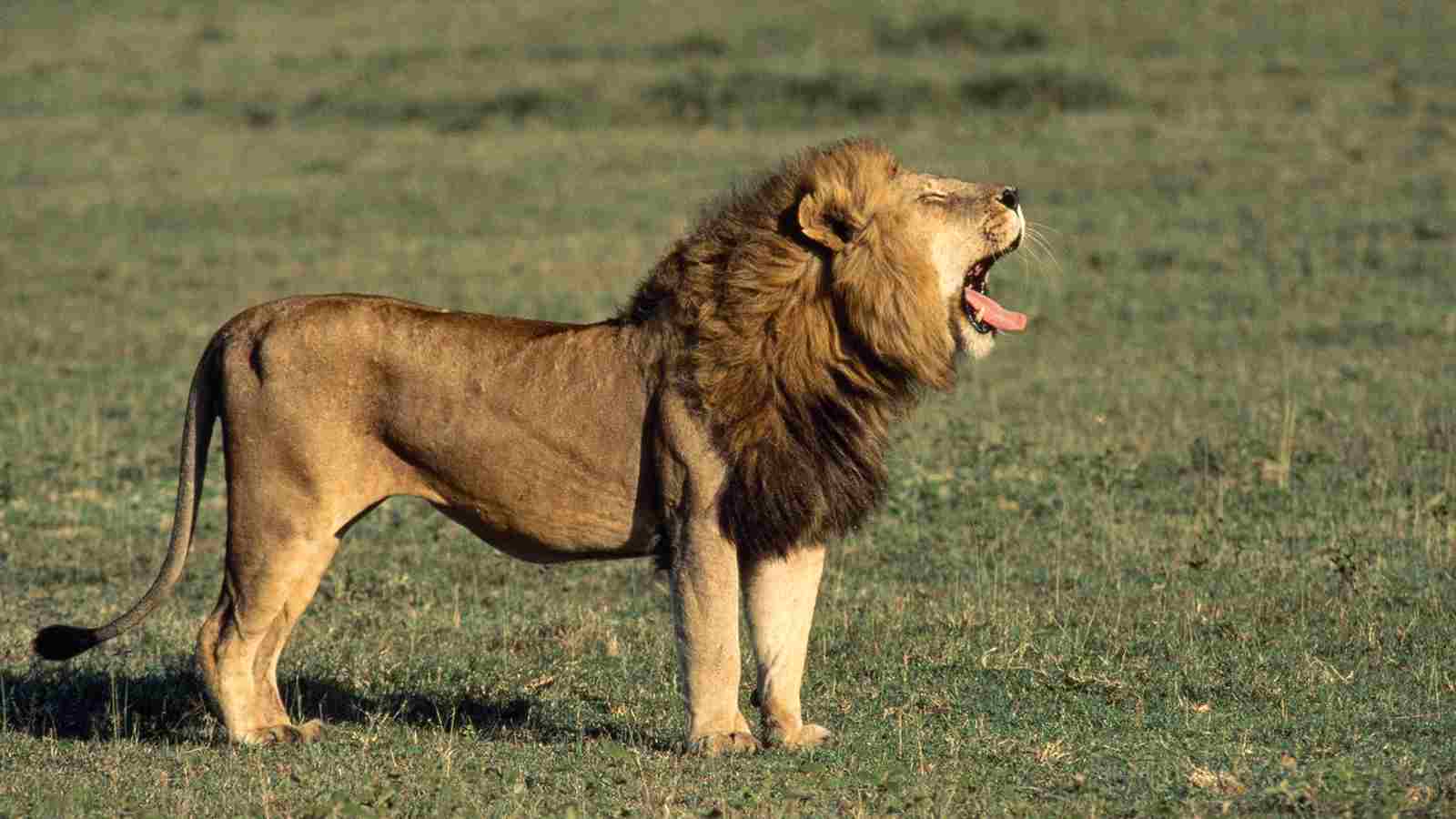
3). Lions Have No Natural Predators
Lions, as apex predators, have no natural predators in their habitat. This absence of predators further solidifies their status as the top of the food chain. Lions do not fall prey to any other consumers, making them the ultimate hunters in their ecosystem.
The fact that lions have no natural predators is a key characteristic of apex predators. It means that lions are not hunted or preyed upon by any other species in their habitat. This gives them a significant advantage in terms of their position in the food chain and their ability to dominate their environment.
Without natural predators, lions are free to roam and hunt without the constant threat of being hunted themselves. This allows them to exert their dominance and control over their prey species, ensuring their survival and the stability of the ecosystem.
The absence of natural predators also allows lions to maintain their population size and thrive in their habitat. Without the pressure of predation, lions can reproduce and raise their young without the constant threat of their offspring being taken by other predators.
Furthermore, the lack of natural predators contributes to the overall balance and health of the ecosystem. Lions play a crucial role in regulating the population sizes of herbivores, which in turn affects the vegetation and other species in the ecosystem. Without the presence of lions as top predators, the ecosystem could become imbalanced, leading to overgrazing and the decline of other species.
4). Tertiary or Quaternary Trophic Classification
The classification of lions as tertiary or quaternary consumers further solidifies their status as apex predators in the food chain. As we examine the energy pyramid and the role lions play in their ecosystem, it becomes clear that they occupy a top position in the trophic hierarchy.
In the food chain, energy flows from the primary producers, such as plants, to the primary consumers, which are herbivores. These herbivores are then consumed by secondary consumers, which are typically carnivores. Lions, as tertiary consumers, feed on these secondary consumers, such as zebras, wildebeests, and buffalo. This places them at a higher trophic level, exerting a significant trophic impact on the ecosystem.
Furthermore, lions can also be classified as quaternary consumers when they scavenge on the remains of other predators’ kills. By feeding on the carcasses left behind by hyenas, leopards, or cheetahs, lions demonstrate their ability to occupy an even higher trophic level. This scavenging behavior allows them to maximize their energy intake and further establish their position as apex predators.
The classification of lions as tertiary or quaternary consumers highlights their crucial role in maintaining the balance of the ecosystem. By preying on herbivores and scavenging on the kills of other predators, lions help regulate the population sizes of their prey and prevent overgrazing. This, in turn, ensures the health and sustainability of the vegetation and other species within the ecosystem.
Do Lions Eat Lions?
While it is not common for lions to eat other lions, there are instances where aggression and competition for resources can lead to the killing of fellow pride members. However, it is important to note that lions are not cannibalistic and do not typically feed on other lions as a food source.
The aggression between lions can arise from various factors, such as competition for prey, mates, and territory. In situations where resources are scarce, lions may resort to killing other lions in order to eliminate competition and secure their own survival. These instances, however, are considered anomalous and are not a regular part of lion behavior.
It is worth mentioning that cases of lions eating other lions have been documented, but they are relatively rare. These occurrences are often attributed to exceptional circumstances, such as extreme food scarcity or other related factors that disrupt the normal dynamics within a pride. In such cases, lions may resort to cannibalism as a desperate measure to survive.
Despite these rare instances, it is important to understand that lions primarily rely on herbivores as their main source of food. Their diet consists mainly of large ungulates such as zebras, wildebeests, and buffalo. Lions are highly skilled hunters and have evolved to efficiently capture and kill their prey using their strength, speed, and cooperative hunting strategies.
Do Lions Eat Tigers?
No, lions do not eat tigers. Both lions and tigers are apex predators, occupying the top of the food chain in their respective habitats. Lions are primarily found in parts of Africa and some regions of Asia, while tigers can be found in various parts of Asia. These two species do not share the same habitat or ecoregion, which greatly reduces the chances of them encountering each other in the wild.
As apex predators, both lions and tigers have evolved to hunt and feed on a wide range of prey species. Lions primarily rely on large herbivores such as zebras, wildebeests, and buffalo for their food. Similarly, tigers hunt and feed on a variety of ungulates, including deer, wild boar, and antelope. The different prey preferences and geographical distributions of lions and tigers contribute to their lack of interaction and the absence of tigers in the diet of lions.
Why Lions Do Not Eat Tigers
1). Both are Apex Predators
Both lions and tigers hold the status of apex predators in their respective habitats. This means that they are at the top of the food chain and do not have any natural predators. Lions, known as the “king of the jungle,” reign over the African savannah, while tigers dominate the forests of Asia.
As apex predators, lions and tigers have evolved to be highly efficient hunters and have developed specialized skills to capture and kill their prey. They possess incredible strength, agility, and sharp hunting instincts, allowing them to take down large herbivores such as zebras, wildebeests, and buffalo.
Due to their similar trophic status, lions do not eat tigers. In the wild, these two majestic big cats do not share the same territory or natural habitat. Lions are primarily found in sub-Saharan Africa, while tigers are native to countries like India, Russia, and Southeast Asia. The geographical separation between the two species prevents any direct competition for resources, including prey.
Furthermore, tigers are generally larger than lions, making them formidable opponents. Tigers can weigh up to 660 pounds, while lions typically weigh around 420 pounds. The size difference, combined with the absence of overlapping territories, reduces the likelihood of encounters between the two species.
2). They Do Not Share Territory or Natural Habitat
Lions and tigers, both apex predators, do not eat each other primarily because they do not share the same territory or natural habitat. Lions are predominantly found in sub-Saharan Africa, while tigers inhabit countries like India, Russia, and Southeast Asia. This geographical separation ensures that there is no direct competition for resources, including prey, between the two species.
In addition to the geographical barrier, the size difference between lions and tigers further reduces the likelihood of encounters and potential conflicts. Tigers are generally larger than lions, with an average weight of up to 660 pounds compared to lions’ average weight of around 420 pounds. This size discrepancy makes tigers formidable opponents and poses a risk to lions, making them unlikely prey for lions.
The distinct habitats and territories of lions and tigers also contribute to their different hunting strategies and prey preferences. Lions have adapted to the open grasslands of the African savannah, where they rely on teamwork and cooperative hunting to bring down large herbivores such as zebras, wildebeests, and buffalo. Tigers, on the other hand, thrive in the dense forests of Asia, where they employ stealth and ambush tactics to capture prey like deer and wild boar.
While lions and tigers may share some similarities as apex predators, their distinct habitats, territories, and hunting strategies prevent them from being direct competitors or prey for each other. Instead, they each play a vital role in their respective ecosystems, maintaining the balance of nature and contributing to the overall biodiversity of their habitats.
3). Tigers are Generally Larger Then Lions
Tigers are generally larger than lions, with an average weight of up to 660 pounds compared to lions’ average weight of around 420 pounds. This significant size difference plays a crucial role in why lions do not eat tigers. Even if they were to share the same territory, tigers would pose a significant risk to lions and are not considered prey.
The larger size of tigers makes them formidable opponents for lions. Tigers have powerful jaws and muscular bodies, which enable them to take down large prey and defend themselves against potential threats. In contrast, lions may find it challenging to overpower a tiger due to their smaller size and less robust physical attributes. This size discrepancy acts as a deterrent for lions, making them unlikely to consider tigers as prey.
Furthermore, the distinct hunting strategies and prey preferences of lions and tigers contribute to their non-predatory relationship. Lions have adapted to the open grasslands of the African savannah, where they rely on teamwork and cooperative hunting to bring down large herbivores. In contrast, tigers thrive in the dense forests of Asia, where they employ stealth and ambush tactics to capture prey. These different hunting strategies reflect the specific adaptations each species has developed to survive in their respective habitats.
Will Lions Eat Humans?
Lions, as apex predators, do not naturally see humans as prey due to their physiological and behavioral distinctiveness. However, there are instances where lions have been known to become man-eaters. This typically occurs due to various reasons, including illness and advanced age.
When lions are ill or injured, they may be unable to hunt their preferred prey and may resort to targeting humans as an easier alternative. Similarly, older lions who are no longer able to compete with younger, stronger individuals for territory and resources may turn to humans as a source of food.
It’s important to note that these cases of lions preying on humans are relatively rare and not representative of the typical behavior of lions in the wild. Lions primarily target large herbivores such as zebras and wildebeests, which are more abundant and easier to catch.
Why Lions May Eat Humans
1). Illness or Injury
When lions are afflicted with illness or injury, it can significantly impact their ability to hunt effectively. This can make humans an easy target for lions in certain circumstances.
Illnesses such as infections or diseases can weaken a lion’s physical condition, impairing their hunting skills and reducing their ability to capture their preferred prey. In such cases, lions may resort to targeting humans as a source of food. Similarly, injuries sustained from fights with other lions or encounters with large prey can hinder a lion’s mobility and agility, making it difficult for them to successfully hunt their usual prey. As a result, lions may turn to humans as a more accessible and vulnerable alternative.
Furthermore, when lions are injured or ill, they may exhibit altered behavior patterns, including a heightened aggression towards humans. This anomalous behavior development can be attributed to the lion’s desperation to find sustenance and survive despite their compromised physical state. In these situations, humans may unknowingly become victims of a lion’s predatory instincts.
It is important to note that these instances of lions preying on humans due to illness or injury are relatively rare. Lions typically prefer to hunt and consume their natural prey, such as ungulates, rather than humans. However, when circumstances align, and lions are faced with limited options, they may resort to targeting humans as a means of survival.
2). Advanced Age
Advanced age can be a contributing factor to lions preying on humans. As lions grow older, they may experience a decline in their physical abilities, making it more challenging for them to capture their preferred prey. This can lead to a scarcity of food and an increased likelihood of lions targeting humans as an alternative food source.
In their later years, lions may suffer from age-related ailments, such as arthritis or dental issues, which can hinder their hunting capabilities. These conditions can make it difficult for them to chase down and overpower their usual prey, forcing them to seek out easier targets. Humans, with their comparatively slower speed and lack of natural defenses, become vulnerable targets for aging lions.
Furthermore, older lions may struggle to compete with younger, more agile individuals for access to prey. As a result, they may be pushed to the outskirts of their territories or forced into less favorable hunting grounds where human settlements are more prevalent. In these circumstances, lions may be more likely to encounter humans and view them as potential sources of sustenance.
It is important to note that instances of lions preying on humans due to advanced age are relatively rare. Lions generally prefer to target their natural prey, and human attacks are typically a last resort. However, as lions age and face challenges in securing their usual food sources, the possibility of them resorting to hunting humans increases.
3). Scarcity of Preferred Prey
Scarcity of preferred prey can be a significant factor that causes lions to prey on humans. Lions are apex predators with specific hunting preferences, primarily targeting large herbivores such as zebras, wildebeests, and buffalo. However, in certain circumstances, the availability of these preferred prey species may decline, leading to a scarcity of food for lions.
Environmental factors such as drought, habitat loss, or overhunting of their natural prey can contribute to the scarcity of preferred prey. When the population of their usual prey decreases, lions may struggle to find enough food to sustain themselves and their pride. In these situations, lions may be forced to explore alternative food sources, including humans.
Human settlements often encroach upon lion territories, leading to increased interactions between lions and humans. As lions search for food, they may come into contact with humans more frequently, increasing the likelihood of human-lion conflicts. When lions encounter humans in areas where their preferred prey is scarce, they may view humans as a potential food source.
It is important to note that instances of lions preying on humans due to the scarcity of preferred prey are relatively rare. Lions are highly adapted to hunting their natural prey and will generally prioritize them over humans. However, when faced with limited options and a desperate need for sustenance, lions may resort to targeting humans as a survival strategy.
4). Anomalous Behavior Development
Anomalous behavior development in lions can be influenced by overexposure to humans, frequent interaction, and conflicts. When lions are consistently exposed to human presence, it can disrupt their natural behavior patterns and instincts. This can lead to abnormal behaviors, including preying on humans.
Human-lion interactions can occur when human settlements encroach upon lion territories. As humans and lions come into contact more frequently, the boundaries between their habitats become blurred. This can result in conflicts, such as livestock depredation or attacks on humans. These conflicts can further contribute to the development of anomalous behavior in lions.
When lions perceive humans as a threat or a potential food source, their behavior may deviate from their natural hunting patterns. Over time, this can lead to a shift in their predatory instincts, causing them to view humans as a viable prey option.
It is important to note that anomalous behavior development in lions is not a common occurrence. Lions are highly adapted to hunting their natural prey and will typically prioritize them over humans. However, prolonged exposure to human presence and conflicts can disrupt their natural instincts and lead to abnormal behaviors.
Conclusion
* In this article, we have explored the trophic status of lions and whether they can be considered apex predators. We have examined various factors that contribute to their classification as apex predators, such as their size, trophic impact, and lack of natural predators.
* Additionally, we have addressed the question of whether lions eat other lions and tigers. We have discussed the reasons why lions do not typically prey on other lions, including their shared apex predator status and the absence of territorial overlap. Furthermore, we have explored the factors that contribute to lions not eating tigers, such as differences in size and habitat preferences.
* Furthermore, we have delved into the topic of whether lions may eat humans. We have considered the circumstances under which lions may view humans as potential prey, including illness or injury, advanced age, scarcity of preferred prey, and anomalous behavior development.
* Finally, we have discussed the development of anomalous behavior in lions and how it can be influenced by human-lion interactions and conflicts. We have highlighted the potential consequences of prolonged exposure to humans and conflicts, including disruptions to natural instincts and abnormal behaviors.
* Overall, this article has provided a comprehensive examination of the trophic status of lions and their interactions with other species, including other lions, tigers, and humans. By considering various factors and scenarios, we have gained a deeper understanding of the complex dynamics within lion populations and their ecological role as apex predators.
FAQs
1. Is A Lion A Apex Predator?
Yes, a lion is considered an apex predator. As the king of the jungle, lions hold a dominant position in their ecosystem. They are skilled hunters and have the ability to take down large prey such as wildebeests, zebras, and buffalos. Lions possess powerful bodies, sharp claws, and strong jaws, which enable them to overpower their prey.
In the African savannah, lions are at the top of the food chain, with no natural predators of their own. They play a crucial role in maintaining the balance of the ecosystem by controlling herbivore populations. Lions’ hunting strategies, such as cooperative hunting in prides, further enhance their predatory success.
2. What are 5 Apex Predators?
When discussing apex predators, it’s important to consider a range of species that hold dominant positions in their respective ecosystems. Five examples of apex predators include lions, tigers, eagles, jaguars, and wolves. These animals are known for their exceptional hunting skills and ability to control the populations of their prey. Lions, for instance, are apex predators in the African savannah, while tigers hold a similar position in the forests of Asia. Eagles, jaguars, and wolves also play crucial roles in maintaining the balance of their ecosystems by regulating the populations of smaller animals.
3. Why are Lions the Top Predators?
Lions are considered the top predator in their ecosystem for several reasons. Firstly, their size plays a significant role in their dominance. Adult male lions can weigh up to 420 pounds, making them formidable hunters. Their large size allows them to take down larger prey, such as wildebeests and zebras, which in turn helps regulate the population of herbivores.
Secondly, lions contribute to trophic cascading, a phenomenon where the presence of a top predator affects the entire food chain. By controlling the population of herbivores, lions indirectly impact the vegetation and other species in their habitat.
Lastly, lions have no natural predators in their ecosystem. This lack of competition allows them to maintain their position as the apex predator.
4. Who is the Apex Predator in Africa?
In Africa, the apex predator is the lion. Lions are known for their strength, agility, and hunting prowess, which make them the top predator in the African savannah. They have a social structure that allows them to work together in hunting and taking down large prey. Lions also have sharp claws and powerful jaws that enable them to overpower their prey.
Their ability to bring down animals like wildebeests and zebras solidifies their position as the apex predator in Africa. Despite the presence of other predators such as hyenas and leopards (which can also be referred to as apex predators), lions remain at the top of the food chain in the African ecosystem.
5. Are Lions Apex Predators in Africa?
Yes, lions are considered apex predators in Africa. With their strength, agility, and hunting prowess, lions hold the top position in the African savannah’s food chain.
Their social structure allows them to work together in hunting and taking down large prey, solidifying their position as the dominant predator. Also, lions’ sharp claws and powerful jaws enable them to overpower their prey, making them highly efficient hunters.
6. Are Cats Apex Predators?
While some cats, such as domestic cats, cheetahs, and ocelots, may not be considered apex predators, there are certainly feline species that hold this title. Apex predators are those at the top of the food chain, with no natural predators of their own.
Big cats like lions, tigers, and leopards are prime examples of apex predators. They possess the strength, agility, and hunting skills necessary to dominate their ecosystems. These majestic creatures are capable of taking down large prey and have no significant threats in their natural habitats.
However, it’s important to note that not all cats are apex predators. Some smaller feline species may occupy lower positions in the food chain, serving as secondary predators or prey for larger animals.
7. Will a Lion Eat Another Lion?
In the wild, lions do not typically eat other lions. While they may engage in aggressive behavior, such as fighting for territory or dominance, cannibalism is rare among lions. Lions are social animals that live in prides, and they rely on each other for survival. They work together to hunt and protect their territory.
However, there have been rare instances where lions have been observed eating other lions, usually in cases of extreme hunger or when a lion is injured or dead. These instances are exceptions rather than the norm. Overall, lions primarily feed on herbivores such as zebras, wildebeests, and buffalo.
8. Can a Lioness Kill a Lion?
The question of whether a lioness can kill a lion depends on various factors such as age, size, strength, and the specific circumstances. In general, lionesses are smaller and less powerful than male lions. However, they are known to be skilled hunters and can work together to bring down large prey.
In rare cases, if a lioness feels threatened or if there is a conflict over territory or resources, she may attack and potentially kill a lion. These instances are not common, as lions typically rely on cooperation and social hierarchy within their pride.
9. Why do Male Lions Kill Each Other?
Male lions killing each other is mainly driven by competition and conflict over territory, prey, and mates. When a new male lion takes over a pride, he often kills the cubs sired by the previous dominant male. This eliminates potential rivals and allows him to pass on his own genes. Male lions also fight for control of a pride, as the dominant male gets exclusive mating rights with the females.
These fights can be brutal and sometimes result in the death of one or both males involved. Additionally, male lions may kill each other when they encounter rival males from outside their pride. This ensures the survival of their own genes and increases their chances of passing on their lineage. Overall, male lions killing each other is a natural behavior driven by the instinct to secure resources and reproductive success.
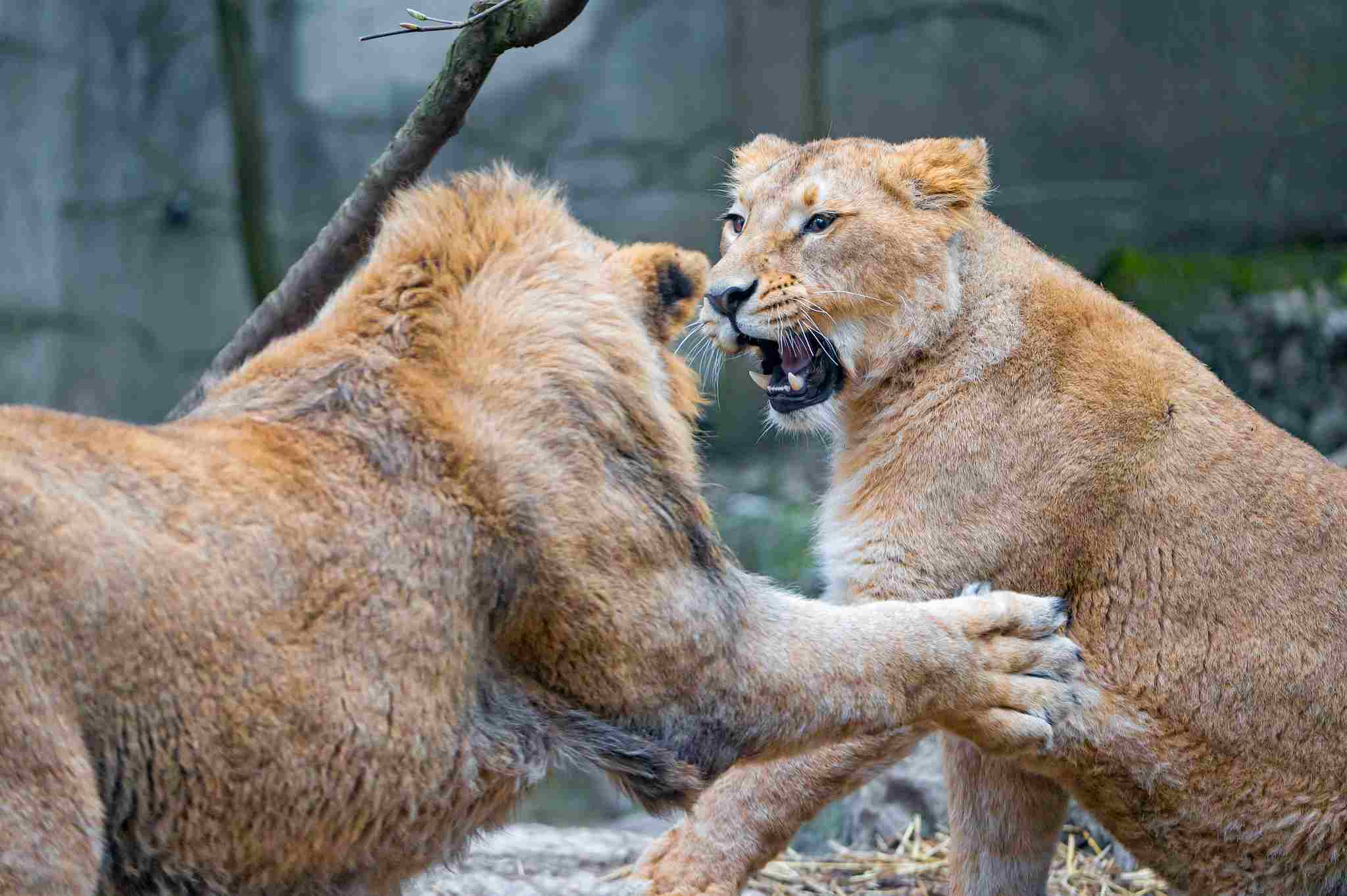
10. Do Lions Eat Their Own Kind?
Lions do not typically eat their own kind. While lions are known to be carnivorous predators, their diet primarily consists of herbivores such as zebras, wildebeests, and buffalo. Lions are social animals that live in prides, which are made up of related females and their offspring, along with a few dominant males.
The members of a pride work together to hunt and bring down large prey. However, in rare cases of extreme hunger or scarcity of food, lions may resort to cannibalism. This behavior is considered abnormal and is not a regular part of their diet. Lions are more likely to scavenge on the remains of other animals rather than eat their own kind.
11. Do Lions Eat Lions in The Wild?
No, lions do not naturally eat other lions in the wild. Lions are social animals that live in prides, which consist of related females and their offspring, along with a few dominant males. The members of a pride work together to hunt and bring down large prey, such as zebras and wildebeests.
While lions may occasionally fight with each other for dominance or territory, they do not typically kill and eat each other. Cannibalism among lions is extremely rare and considered abnormal behavior.
12. Do Lions Eat Lions When They Die?
Lions are not cannibalistic scavengers. When lions die, they are not typically eaten by other lions. Instead, lions are more likely to be scavenged by other animals such as hyenas or vultures. These animals are attracted to the scent of a dead lion and will feed on the carcass.
However, it is important to note that this behavior is not exclusive to lions and can be observed in various predator and scavenger species. So, while lions may not eat other lions when they die, their remains can still provide a source of food for other animals in the ecosystem.
13. Do Hyenas Eat Lions?
Typically, hyenas do not eat lions. While they may scavenge on lion kills, hyenas are not known to actively hunt and kill adult lions. However, if given the opportunity, hyenas may occasionally prey on lion cubs. This behavior is relatively rare and not commonly observed in the wild.
Hyenas are primarily scavengers and prefer to feed on the remains of herbivores rather than engage in direct confrontations with other predators. They have powerful jaws and can crush bones, allowing them to access the nutritious marrow inside. This scavenging behavior helps hyenas survive in their harsh and competitive environment.
It is important to note that the relationship between lions and hyenas is complex and can vary depending on the specific circumstances. In some cases, hyenas may steal kills from lions or engage in confrontations over resources. However, the idea of hyenas actively hunting and eating adult lions is not a common occurrence.
14. Do Lions Eat Other Lions Cubs?
While it is possible for lions to eat other lions’ cubs, this behavior is not common. In some cases, male lions may kill and eat cubs to assert dominance and eliminate potential competition. However, this behavior is more likely to occur when a new male takes over a pride and wants to establish his own lineage.
It is important to note that not all male lions exhibit this behavior, and it is not a regular occurrence within lion populations. Lions are social animals that rely on cooperation and the protection of their young for the survival of the pride. Therefore, the killing and eating of cubs by other lions is not a widespread phenomenon.
15. Do Lions Kill Other Lions?
Yes, lions do kill other lions, but it is not a common occurrence. Conflict between lions can arise when there is competition for territory or resources, or when a new male takes over a pride and wants to establish dominance. In these situations, fights can break out, and sometimes, one lion may kill another.
However, such incidents are relatively rare and not a regular part of lion behavior. Lions are social animals that rely on cooperation within their pride for survival, so killing other lions is not a widespread phenomenon.
16. Do Lions Eat Cheetahs?
Naturally, lions do not eat cheetahs. While lions are known to be apex predators, their diet primarily consists of large herbivores such as zebras and wildebeests. However, in rare cases, lions may kill cheetahs if they perceive them as a threat or competition for resources. This can occur when territories overlap or during intense competition for prey.
It’s important to note that these instances are not common and do not reflect the typical behavior of lions. Lions and cheetahs have different hunting strategies and occupy different niches within the ecosystem. Lions are larger and more powerful, while cheetahs rely on their speed and agility to catch prey.
17. Do Lions Eat Elephants?
Lions are known for their cooperative hunting behavior, which allows them to take down large prey. While it is not very common for lions to eat elephants (due to the latter’s immense size and power), they are capable of doing so. Lions typically target smaller herbivores like zebras and wildebeests, but in certain circumstances, they may attempt to bring down an elephant.
In most cases, lions will scavenge rather than actively hunt elephants. They take advantage of carcasses left behind by other predators or natural causes. Lions are opportunistic feeders, and if the opportunity presents itself, they will not hesitate to consume an elephant’s remains.
18. Do Female Lions Eat Male Lions?
No, female lions do not typically eat male lions. While lions are known for their cooperative hunting behavior, where females often work together to bring down prey, they do not exhibit cannibalistic behavior towards their own kind. Female lions rely on the strength and protection provided by the presence of male lions in their pride.
They form strong social bonds and work together to raise their cubs and defend their territory. Cannibalism within a pride would disrupt this social structure and jeopardize the survival of the group. Female lions primarily focus on hunting and consuming prey species such as zebras, wildebeests, and other herbivores.
19. Has a Lion Ever Eaten a Tiger?
There have been no well-documented cases of a lion eating a tiger. Lions and tigers are both apex predators and have significant biological similarity. However, due to their different habitats and ranges, encounters between lions and tigers are rare.
In captivity, where they may be housed together, precautions are taken to prevent such interactions.
20. Can Lions Hunt Tigers?
Generally no, lions do not hunt tigers.
Lions and tigers are both apex predators, and while lions are known for their strength and hunting prowess, tigers are larger and more solitary, making them formidable opponents. In the wild, their habitats and ranges rarely overlap, reducing the chances of encounters.
However, in captivity, where they may be housed together, precautions are taken to prevent any potential conflicts between these powerful predators. So, while it is possible for lions to hunt tigers, it is not a common occurrence.
21. Do Lions Eat More Than Tigers?
Generally, tigers are larger and eat more than lions. However, this depends on several factors including gender and age.
22. Does Lion Eat Leopard?
Lions and leopards are both apex predators in their respective habitats, but they do not typically prey on each other. While lions may occasionally kill a leopard if they come into direct conflict, it is not a common occurrence. Lions and leopards often exhibit different hunting strategies and prey preferences, which reduces the likelihood of direct competition.
Lions are more social and rely on teamwork to bring down larger prey, while leopards are solitary hunters that specialize in ambushing smaller prey. Therefore, while lions and leopards may coexist in the same area, they generally do not view each other as prey.
23. What Animal Will Eat a Dead Lion?
When a lion dies, there are several animals that may feed on its carcass. Vultures are often the first to arrive, attracted by the scent of death. These scavengers have powerful beaks and can strip a lion’s carcass clean within hours. Hyenas, known for their opportunistic feeding habits, will also eagerly devour a dead lion.
They have strong jaws and can crush bones to access the nutritious marrow inside. Other scavengers, such as jackals and even smaller predators like foxes, may also take advantage of a lion’s remains. The circle of life continues as these animals play their part in nature’s cleanup crew.
24. Will a Lion Eat an Already Dead Animal?
Yes, a lion will eat an already-dead animal, under some circumstances.
When it comes to lions, they are known to scavenge on already dead animals, but it is not their preferred source of food. Lions are opportunistic predators, and if they come across a carcass, they will not hesitate to take advantage of an easy meal. However, this behavior is more common when food is scarce or when they are facing competition from other predators.
In the wild, lions primarily rely on their hunting skills to catch fresh prey. They are skilled hunters and work together in coordinated groups to bring down large herbivores like zebras and wildebeests. Hunting provides them with the necessary nutrients and energy they need to survive.
Scavenging is more of a backup plan for lions. If they stumble upon a carcass that has been abandoned by other predators or if they are unable to secure a fresh kill, they will scavenge on the already dead animal. This behavior allows them to sustain themselves during lean times when hunting may be challenging.
